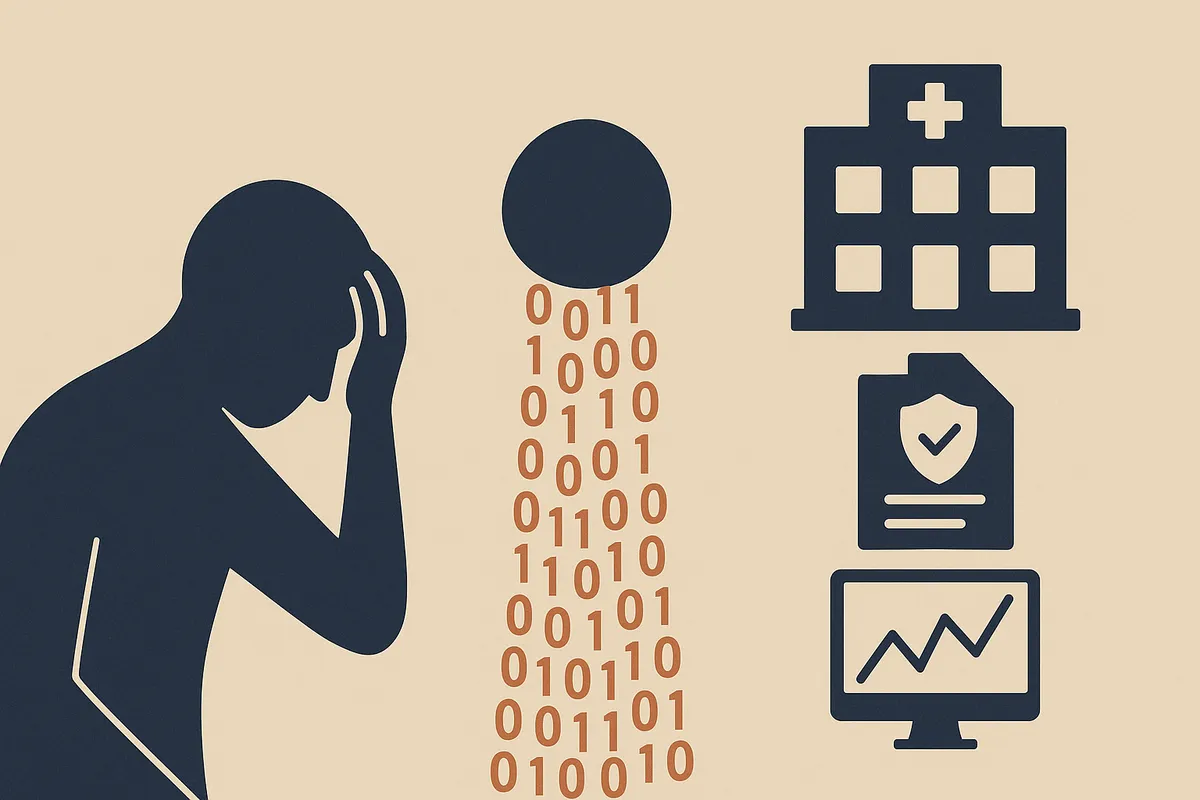Self-Harm in Autism: When Research Codes the Harm Into Us
 A new paper published in Injury Epidemiology — "Association between autism spectrum disorder and intentional self-harm" by A. Blanchard, S. Chihuri, C. DiGuiseppi, and G. Li of Columbia University, the University of Colorado School of Public Health, the Icahn School of Medicine at Mount Sinai, and the University of Colorado School of Medicine — claims autistic people are "more likely" to show up in the ER for intentional self-harm. If ADHD or intellectual disability are also in the chart, the odds go even higher.
A new paper published in Injury Epidemiology — "Association between autism spectrum disorder and intentional self-harm" by A. Blanchard, S. Chihuri, C. DiGuiseppi, and G. Li of Columbia University, the University of Colorado School of Public Health, the Icahn School of Medicine at Mount Sinai, and the University of Colorado School of Medicine — claims autistic people are "more likely" to show up in the ER for intentional self-harm. If ADHD or intellectual disability are also in the chart, the odds go even higher.
This isn’t neutral observation. It’s a frame. And it’s the wrong one.
The authors pull five years of data from the Nationwide Emergency Department Sample. They identify ED visits coded for intentional self-harm, cross-match them to autism diagnoses, and run adjusted odds ratios. In the fully adjusted model, they control for the presence of other neurodevelopmental diagnoses. In stratified analyses (Table 4), the model does not adjust for the other diagnosis within each grouping.
In their own results:
- Autistic patients have higher odds of intentional self-harm visits.
- Odds go up with ADHD or ID.
- Poisoning is the most common mechanism in both groups.
- In autistic patients, poisonings more often involve psychotropic or antiepileptic drugs.
And in their stated limitations: the dataset only counts visits that make it to the ER and get coded in a specific way. Some events are missed. Some are misclassified. Nothing outside the hospital is visible.
That’s where the problem starts.
You cannot take a narrow, code-driven slice of crises and treat it like the whole truth. But the way this paper is written, the "risk" is carried forward as part of our diagnosis, not as the product of the systems we move through.
The difference matters. If the majority of poisonings in autistic patients involve the same drugs most often prescribed to us, that’s not an incidental detail. It’s a pattern that deserves more than a single table cell. The paper notes it. Then moves on.
When you stop at "autistic people are more likely," you make it sound inevitable. You strip out the questions that could point to change:
- Are these differences about prescribing practices?
- Medication monitoring?
- Access to other crisis responses before the ER?
- The environments people are sent back into after discharge?
Those questions aren’t in the paper. The structure doesn’t allow them. But that’s the point — if you keep the lens tight, you keep the explanation simple. You make autism the variable, and you leave the rest of the system out of view.
And that’s where the harm lands. This frame doesn’t just report numbers; it hands more power to the institutions already deciding who gets help and who gets watched. Hospitals. Insurers. "Risk management" software. They all benefit when diagnosis is the story.
The people who lose are the ones whose realities never make it into the dataset — the autistic people who don’t reach the ER, whose distress is misread, whose crises are shaped by closed doors, long waits or environments that escalate instead of calm.
Yes, the odds are higher in this dataset. But the dataset is not the world. Treating it like the world erases the conditions that make those odds real.
Autistic people are not the risk here. The risk is what this research leaves out — and what happens when its partial picture gets treated as the whole.